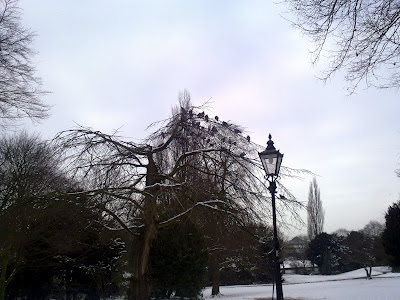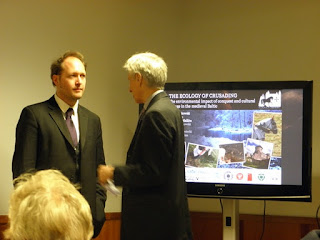I actually like staff meetings, even admin related ones, as it means I get to spend time at the Kings Manor. The main part of the Department of Archaeology at York is located in the town centre at the old Tudor manor house, whereas the laboratories for the BioArCh group where I spend the majority of my time, are located on campus next to the Department of Biology. The place where I have lived for the past year and a half is about a 5 minute walk from the Kings Manor. The photos below show the route I took to work the other day through the Museum Gardens, complete with flock of pigeons, Narnia-esque lamp post, and abbey ruins. When I stopped to take a picture of the pigeons all huddled in the tree, they somehow knew I was focusing on them and all descended from the tree and landed at my feet in a flurry of coos. I felt a bit guilty that I didn’t have any crumbs for them! I think living in the town centre I take for granted just what a pretty place York is – the snow makes everything lo




